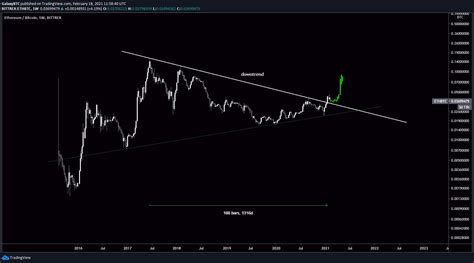CRYPTOCURRENCY
Ethereum: Why is the block header 80 bytes, not 128 bytes (= two SHA-256 blocks)?
The Mystery of Ethereum Block Header Size: Revealing the Truth
As all Bitcoin enthusiasts know, the block header is a fundamental part of the blockchain that stores essential information about each new block. However, one aspect has long been shrouded in mystery: the size of the block header itself. Specifically, why is it inconsistent with the 128-byte block header format used by other cryptocurrencies, such as Bitcoin? In this article, we’ll delve into the history and logic behind Ethereum’s unique block header design.
Historical Background
In the early days of cryptocurrency development, the choice of block header size was largely driven by practical reasons. Launched in 2009, Bitcoin originally specified a 128-byte block header to maximize storage space and minimize network congestion. Using two SHA-256 blocks (128 bytes each) ensured that new blocks were not too large and could still be efficiently uploaded to the network.
However, as cryptocurrency adoption has grown, concerns about security and scalability have also grown. Larger block headers can lead to higher transaction costs and slower transaction times, as data storage requires additional overhead. To address these issues, developers like Vitalik Buterin and Gavin Wood are exploring alternative approaches that balance security, scalability, and usability.
Ethereum Block Header Size: 80-Byte Solution
In 2016, Ethereum introduced its own block header design that deviates from the traditional 128-byte format. According to the Bitcoin Developer Reference, the total size of an Ethereum block is in fact 80 bytes. This decision was made with a specific purpose in mind.
The main reason for choosing an 80-byte block header was to address congestion and transaction availability. By reducing the overhead associated with storing two SHA-256 blocks, Ethereum aimed to improve network efficiency and reduce the number of transactions required to process a single block. This approach allowed the network to scale more efficiently while maintaining reasonable transaction times.
Why 80 bytes?
Several factors influenced Ethereum’s decision to adopt an 80-byte block header size:
- Lower transaction overhead
: By storing only one SHA-256 block, Ethereum minimizes the amount of data required for each new block.
- Improved network efficiency: The smaller block header reduced network congestion and increased throughput, enabling faster transaction times.
- Improved scalability

: The 80-byte design allowed Ethereum to handle more transactions per second without compromising security or usability.
Comparison to Bitcoin
You can see the difference between the two block headers:
- Bitcoin: 128 bytes
- Ethereum (2016): 80 bytes
While it may seem counterintuitive that the Ethereum blockchain is smaller than its predecessor, this design choice has contributed to the platform’s growing usage and popularity. With its unique approach, Ethereum has established itself as a leader in cryptocurrency innovation.
Conclusion
In summary, the decision to adopt an 80-byte block header size for Ethereum was driven by a complex interplay of factors such as scalability, usability, security, and network efficiency. By reducing transaction costs, improving network performance, and increasing scalability, Ethereum’s unique design has allowed it to thrive in the cryptocurrency landscape. As the ecosystem continues to develop, it will be interesting to see how other cryptocurrencies respond to this innovative approach.


Bài viết liên quan
Understanding The Dynamics Of Trading Ethereum Classic (ETC) And NFTs
Understanding the Dynamics of Trading Ethereum Classic (etc) and Non-Fungible Tokens (NFTS) Cryptocurrency has become a buzzword in the financial world, with many investors flocking to trade digital currencies like...
Identifying Reversal Patterns For Better Trading Outcomes
Identification of inverted models to best trading results in cryptocurrency The world of cryptocurrency trading is known for its high volatility and unpredictable market fluctuations. As a result, investors and...
The Role Of Tokens In Decentralised Finance
Role of chips in decentralized finances (Defi): Financial Future Revolution In recent years, the world has changed significantly in the financial environment. Traditional institutions and mediators have been replaced by...
How Governance Tokens Shape The Future Of Ethereum (ETH)
* Growth of Man Management Tokes and Their Edfecacts of Etreum * In Recentration, The Cyptocurrrency World Has Has Signly Changed the Management Has Been Structred. Traditional Centrolized systems ya...
How Decentralized Finance Is Reshaping Tokenomics
Cryptocurrency and increasing decentralized financing (Defi): How to develop tokenomics In recent years, the world of cryptocurrencies has undergone a significant transformation that is due to the increase of decentralized...
How To Secure Your Investments In Binance Coin (BNB) With 2FA
Secure your cryptocurrency investments with two factors on Binance Coin (BNB) The world of cryptocurrencies has experienced rapid growth and adoption in recent years, making it a popular choice for...
Understanding Market Depth And Its Effects On Trading: A Study On Chainlink (LINK)
Here is a comprehensive article about understanding the depth of the market and its effects on the trade, including a study on Chainlink (Link): Understanding of the market depth and...
The Benefits Of Multichain Strategies In DeFi
Here is a more detailed analysis of the benefits of Multichain strategy in DEFI: What are Multichain strategies? Multichain strategies include the use of many chains (e.g. Ethereum, Solana, Binance...
How To Create A Risk Management Plan For Crypto Trading
Creating a Risk Management Plan for Cryptocurrency Trading The world of cryptocurrency has come a long way since its inception in 2009. With the rise of new technologies and increasing...
Futures Expiration: Strategies For Successful Trading
**Futures Expiration: The Strategies Form. The world off crypto currency trading can be volitile and unpredictable. With the rice off cryptocurrencies such as Bitcoin, Ethereum, and others, the market has...
Understanding Price Action: A Focus On Dogecoin (DOGE)
Understand the price campaign: an approach in Dogecoin (Doge) The world of cryptocurrency has become increasingly complex and volatile in recent years, and prices fluctuate quickly in online exchanges. An...
The Importance Of Community Engagement In Crypto Projects
Here is a break in the importation of community engagement in cryptography projects: What is a community commitment crucial Participation of pre-sale : Many projects holde presale their official bill,...